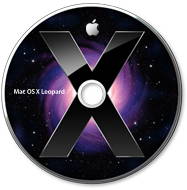Will virtualization be king at Macworld Expo?


According to the company, the software will run Leopard Server in its own virtual memory and only on Apple hardware. In a company blog, SWsoft's director of corporate communication said the Parallels Server will let admins maximize the use of Xserves in the data center.
And, to answer those of you who are asking the "Whoa, I can virtualize Leopard? Does that mean I can run OS X on a Dell/HP/IBM?", there are a few limitations:
This is for Leopard SERVER only, not Leopard Client.
This is only permitted on real Apple hardware, per Apple's EULA. You're still not allowed to run OS X on non-Apple hardware.
System managers will be able to choose between a "lightweight hypervisor mode," that the company said was similar in implementation to Desktop for Mac, or in a headless mode via a “bare metal” hypervisor. This latter option will let the virtualized OSes run in in parallel without dependency of an underlaying operating system.
Read the related story: Parallels, VMware Fusion, Boot Camp battle in real-world tests.
From the Parallels' press release:
The software supports any combination of more than 50 different guest operating systems including Windows Server 2003, Windows Server 2008 "Longhorn", Red Hat Linux, SUSE Enterprise Linux, Sun Solaris, simultaneously, in isolated virtual machines. Customers running Parallels Server on Apple hardware also have the industry-first option of running Mac OS X Server in a virtual machine."
In addition, Parallels Server will support Intel VT-d (Intel Virtualization Technology for Directed I/O), a technology that is now found in the chipset of the new Harpertown Xeon-based Mac Pros and Xserves introduced on Tuesday. This will enable hardware support for the remapping of I/O DMA transfers and device-generated interrupts, and let the virtualized OSes share a single physical device, such as a PCI Express card for example.